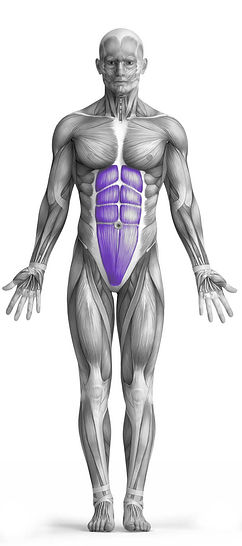Straight Leg Toe Touch (Floor Toe Reach) 101 Video Tutorial
0

Exercise Synopsis
Target Muscle Group
Abs
Secondary Targets
None
Execution
Isolation
Force Type
Pull (Bilateral)
Required Equipment
Bodyweight
Fitness Level
Beginner
Variations
None
Alternatives
None
Timer
Hour
Minute
Second
Stopwatch
00:00:00:00
Overview
The Straight Leg Toe Touch (Floor Toe Reach) is a bodyweight exercise primarily targeting the abdominal muscles, particularly the rectus abdominis. To perform the exercise, lie flat on your back with your legs extended straight and feet together. Keeping your legs straight, reach your hands towards your toes while engaging your core, lifting your shoulders and upper back off the ground. This movement focuses on flexing the spine and activating the abs, helping to improve core strength and stability. Since it only requires bodyweight, it's an effective and accessible exercise for strengthening the abs without any equipment.
How to Perform
Start by lying flat on your back, ensuring your arms and legs are fully extended and relaxed.
Lift your legs off the ground, keeping them straight, until they form a 90-degree angle with the floor.
As you exhale, engage your core and slowly reach upward with your hands, aiming for your toes.
Focus on contracting your abdominal muscles as your upper back lifts off the floor. Hold the contraction briefly.
Gradually lower your body back to the starting position with control, ensuring your legs stay straight throughout the movement.
Repeat the exercise for the prescribed number of repetitions, maintaining proper form and controlled movements throughout.
★ Bonus: For exercises that involve external weights (such as dumbbells, barbells, or machines), the One Rep Max (1RM) calculator can help you estimate your maximum lifting capacity. Use it to track your strength progress and adjust your training for optimal results.
Tips
Exhale forcefully as if you’re blowing out a candle, engaging your core deeply. Pause briefly at the top of the movement to enhance the mind-muscle connection.
If you experience discomfort in your lower back, consider substituting this exercise with movements that focus more on anti-extension and anti-rotation to protect your spine.
Refrain from placing your hands behind your head, as this can cause unnecessary strain on your neck and compromise your form.
How Not to Perform
Avoid Using Momentum: Do not swing your body or use jerky movements to reach your toes. Focus on a slow, controlled motion to fully engage your abs and avoid wasting energy.
Don’t Arch Your Lower Back: Keep your lower back pressed against the floor throughout the exercise. If your lower back starts to lift, this could indicate that your core isn’t fully engaged, leading to strain on your spine.
Don’t Strain Your Neck: Avoid pulling on your neck with your hands. Keep your neck relaxed, and use your core to lift your upper body. Straining your neck can cause unnecessary tension and discomfort.
Don’t Overextend Your Reach: Ensure you’re reaching directly for your toes without overextending. Overreaching can lead to unnecessary strain on your shoulders and lower back.
Avoid Holding Your Breath: Remember to exhale as you lift your upper body, keeping your breathing steady. Holding your breath can increase tension and reduce the effectiveness of the exercise.
Don’t Let Your Legs Bend: Keep your legs straight throughout the movement. Bending your knees can reduce the intensity on your abs and shift focus away from the target muscle.
Avoid Fast Movements: Perform each repetition with control, taking time to focus on the muscle contraction at the top. Fast movements may lead to reduced muscle activation and higher risk of injury.
Don’t Neglect the Eccentric Phase: Lower your body back down slowly, resisting gravity. Rushing through the downward motion can reduce the effectiveness of the exercise and waste energy.
Variations
Variations of fitness exercises refer to different ways of performing a specific exercise or movement to target various muscle groups, intensities, or goals. These variations aim to challenge the body differently, prevent plateaus, and cater to individuals with varying fitness levels.
Alternatives
Alternative exercises in fitness refer to different movements or activities that target similar muscle groups or serve the same training purpose as the primary exercise. These alternative exercises can be used as substitutes when the original exercise is unavailable or challenging to perform due to various reasons such as equipment limitations, injuries, or personal preferences.








